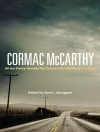Virginia Woolf’s immensely influential and still provocative long essay, A Room of One’s Own, originated from a pair of lectures she presented at two women-only colleges at Cambridge University in 1928. One of Woolf’s most brilliant and searing texts, this literary tour de force continues to guide and inspire women around the world. The essay’s central premise, encapsulated in its title, posits that for a woman to craft fiction, she requires financial autonomy and a private space. Woolf argues that women have the potential to create works as important as those by Shakespeare. She outlines the constraints that have historically impeded and continue to hinder woman writers. She argues that societal norms, lack of educational opportunities, and financial dependence have significantly limited women’s ability to realize their full potential. Woolf demonstrates that creativity requires not just time and money, but freedom from the social roles imposed on women to this day. Powerful and sometimes controversial, the essay’s enduring significance lies in its nuanced exploration of how material conditions shape artistic possibility. This Warbler Classics edition includes an extensive, detailed biographical timeline.
Cuprins
Chapter One
Chapter Two
Chapter Three
Chapter Four
Chapter Five
Chapter Six
Biographical Timeline
Despre autor
VIRGINIA WOOLF (1882-1941) is considered one of the most important modernist authors of all time. Her novels include Jacob’s Room, Mrs. Dalloway, To the Lighthouse, Orlando, and The Waves. Until her death by suicide in 1941, she was at the center of The Bloomsbury Group in London, a circle of immensely influential writers, artists, and intellectuals who created new paradigms for artistic expression during a time of great cultural, economic, and political upheaval.












